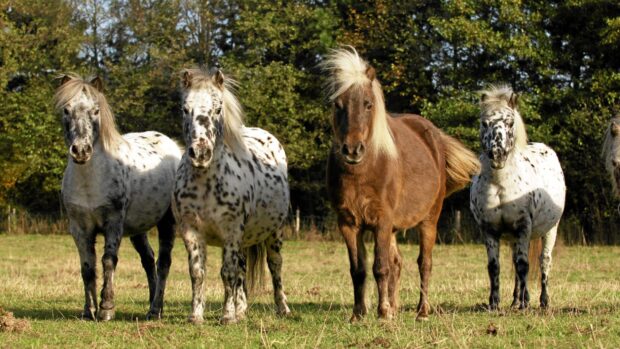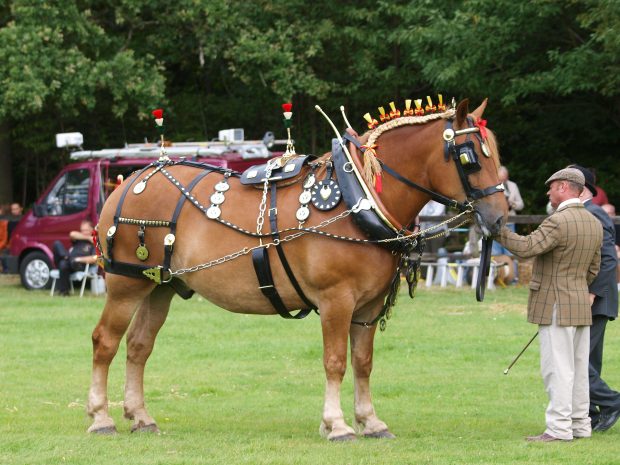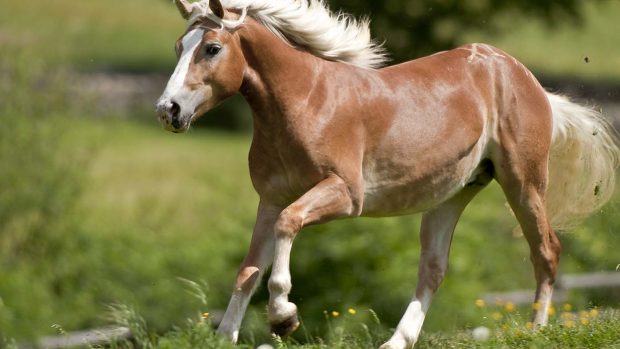The Lipizzaner horse is inextricably linked to the Spanish Riding School of Vienna. With its white coat and spectacular airs above the ground, it is one of the most recognisable horse breeds in the world. But how did a Spanish warhorse of ancient North African origin become synonymous with classical equitation in Austria?
In this article: History | Spanish Riding School | Factfile
History
It could be said that the Lipizzaner is the oldest pure-bred horse in Europe. It goes back to the eighth century when the Moors of Arabia conquered Spain and set about ruling their Iberian peninsula with the help of their own war horses, the Barb (or Berber) and Arabs. These were crossed with native breeds, which produced what became known as the Andalusian.
Fast-forward to the 1500s, when Austria was a major military power in Europe and the Austrian court recognised the need for the ultimate war-horse. During this time, the Andalusian and Iberian horses, renowned for their speed, grace and performance on the battlefield, were considered the best in the world.
In 1562 Maximillian II, of the Hapsburg dynasty, imported Andalusian stallions to Austria and founded the Court Stud at Kladrub. In 1580, his brother, Archduke Charles, bought nine Andalusian stallions and 24 Karst mares to stand at the newly formed stud in Lipizza (now spelt Lipica), creating the Imperial Herd. The name Lipizzaner was first recorded in the 18th century.
They also imported horses from Italy, but these had predominantly Spanish blood. In the 15th century, Spanish horses were brought into Italy for use in equitation schools in Naples during the Renaissance when the athletic skill and intelligence of classical riding was highly valued. They used Spanish horses to make a lighter, more agile breed – the Neapolitan, which is now extinct, but its bloodlines live on in the breeds it has influenced, such as the Lipizzaner.
From the Imperial Karst Stud stud the major bloodlines were established and continue today through the the six major stallion families — Pluto, Conversano, Favory Senior, Maestroso, Neopolitano and Siglavy.
The Spanish Riding School
The Spanish Riding School is the only institution in the world which for 450 years has practised and continues to cultivate classical equitation in the Renaissance tradition of the Haute Ecole. Their tagline is “living tradition, the values of the past blending with the passion of the present”. The only horses used to perform at the school are Lipizzaner stallions.

The world-renowned white-coated Lipizzaner stallions from the Spanish Riding School
Renowned for its amazing displays of classical equitation, unchanged since the Renaissance period, the Spanish Riding School of Vienna derived its name from the horses, of almost exclusively Spanish blood, that were sent there for training.
The Lipizzaner horses that perform with the school today have earned international acclaim and a worldwide following. Performances include steps and movements of the classical school, pas de deux, displays on the short rein, displays on the long rein, schools above the ground and the school quadrille.
While the riding school’s Lipizzaners originate from the Kladrub and Lipica studs of the 16th century, since 1920 the stud has been located in Piber, also in Austria. They breed around 40 Lipizzaner foals each year, and only the very best colts go on to be the stallions that perform at the Spanish Riding School.
To train as a Spanish riding school rider takes eight to 10 years, starting with three years training as a groom. If the trainee impresses, they may also undergo a year or two of lungeing and non-stirrups work while they are being assessed as potential riders. It’s a programme which, according to the Spanish Riding School itself, “is a lifelong education, always subjected to the needs of the horses. It is tough, and requires iron discipline.”

Training to become a rider with the Spanish Riding School takes the best part of a decade
About the breed: conformation and factfile
- A compact and powerful horse standing 14.2h–16hh
- Long head with flat or convex profile
- Muscular and well-arched neck
- Deep, wide chest, with powerful, sloping shoulders
- Foals are born bay or brown, and lighten to white as the horse matures

Lipizzaner foals are born dark and whiten as they mature
Traditionally all horses are marked with family brands that give details of foal number, stallion dynasty, mare family and stud origin
In 2008, The Queen was given a Lipizzaner from Slovenia.
The Livestock Conservancy lists the Lipizzaner as a rare breed, with an estimated global population of 3,000. However, the Lipizzan International Federation puts the figure at around 12,000.
The grey coat of the Lipizzaner has a special religious and symbolic significance. The Moors believed that God chose the pure white coats of the Andalusian, while pure white horses of the Romans were also believed to be of divine influence and were chosen to pull the chariots of emperors. This trait is carried through the Lipizzaner to this day, and to see a non-grey adult horse is very rare
While famous for its airs above the ground, the Lipizzaner excels in dressage – the Spanish Riding School performs the purest form of dressage. But Lipizzaners are also used as an all-rounder, participating at various levels of equestrian activities, such as jumping, driving and hacking.

Lipizzaners can make lovely general riding horses – not all are trained to perform at the highest level in Vienna
For those who want to buy a Lipizzaner, the Piber Stud offers general riding horses, youngsters, backed horses and breeding horses for sale, all pure-bred Lipizzaners of the best quality. Of the 40 that are bred each year, very few go on to make it as the performance stallions in Vienna or to be used for breeding.
As with any horse, there is no ballpark figure on how much a Lipizzaner costs. Prices are dependent on age, training, temperament, conformation, ability and so on.
You may also like to read…

The Queen receives Lipizzaner as a gift from Slovenia
The Queen was given a Lipizzaner horse as a gift during a state visit to Slovenia

¡Ole! Spanish, Iberian or PRE? What makes an Andalusian horse?
Get all the facts and figures about Andalusian horses

The ‘do-all draft horse’: a snapshot of the versatile Percheron

Subscribe to Horse & Hound magazine today – and enjoy unlimited website access all year round
Horse & Hound magazine, out every Thursday, is packed with all the latest news and reports, as well as interviews, specials, nostalgia, vet and training advice. Find how you can enjoy the magazine delivered to your door every week, plus options to upgrade your subscription to access our online service that brings you breaking news and reports as well as other benefits.





